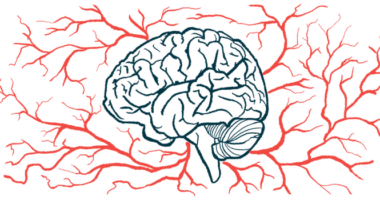Gene therapy lowers number of red blood cells that take sickle shape
Proportion of cells that make abnormal HbS decline with BCH-BB694 treatment

The number of red blood cells that produce the abnormal hemoglobin S (HbS), which characterizes sickle cell disease (SCD), is reduced by the experimental gene therapy BCH-BB694, as is their tendency to take a sickle-like shape.
That’s according to single-cell data from seven patients in an ongoing Phase 1 clinical trial (NCT03282656), whose previous findings showed BCH-BB694 prevented SCD-associated complications.
The new findings indicate the gene therapy is more effective at preventing red blood cell sickling than hydroxyurea, the standard SCD treatment. More research is needed to assess whether these results translate into different clinical outcomes, given that this was a comparison at the cellular and molecular level, the researchers said. BCH-BB694 is also being tested in up to 25 severe SCD patients, ages 13-40, in the Phase 2 GRASP trial (NCT05353647), which may still be enrolling in the U.S.
The study, “Genetic reversal of the globin switch concurrently modulates both fetal and sickle hemoglobin and reduces red cell sickling,” was published in Nature Communications.
Reactivating HbF
SCD is caused by mutations in a gene that provides instructions to make the adult form of hemoglobin, the protein that red blood cells use to carry oxygen throughout the body. As a result, cells make HbS, which can clump up inside them and deform them into the shape that gives the disease its name.
Fetal hemoglobin (HbF) is a version of hemoglobin usually produced only during fetal development and is more effective at transporting oxygen than its adult counterpart. Reactivating HbF can help prevent red blood cells from sickling. Hydroxyurea is thought to work mainly by activating HbF, though the exact mechanisms are unclear.
BCH-BB694 is designed to activate HbF production by blocking the activity of the BCL11A gene, which normally helps “turn off” HbF in blood cells. The one-time therapy involves collecting blood stem cells from a patient’s bone marrow, modifying them, and delivering them to the patient via a stem cell transplant.
By introducing these modified stem cells into the bone marrow, the therapy should promote the production of new red blood cells with high HbF levels, low HbS levels, and a reduced ability to sickle — diminishing SCD symptoms.
A research team led by scientists at Boston Children’s Hospital launched a pilot Phase 1 trial wherein a single infusion of BCH-BB694 was administered to 10 people with severe SCD.
Data up to four years after dosing indicated the gene therapy could increase HbF as designed and reduced SCD complications, such as vaso-occlusive crises, in all but one treated patient.
Comparing gene therapy with hydroxyurea treatment
The researchers have now examined the effect of BCH-BB694 on hemoglobin and blood cell dynamics. The study included data from seven of the first nine treated patients, all of whom showed good response to the therapy after up to four years of follow-up. None received any blood transfusions after being treated with BCH-BB694.
The researchers compared their results with data from 10 SCD patients treated with hydroxyurea who had a high HbF response, specifically HbF higher than 20% of total hemoglobin content per red blood cell. This threshold corresponded to the lowest HbF levels observed for the seven BCH-BB694-treated patients. Factors like age and clinical outcomes weren’t matched between the groups.
“This study was designed specifically to compare the molecular and cellular effects of treatments and not to compare clinical outcomes. Clinical outcome data is therefore not reported, and no claims are made about the superiority of these single-cell assays for predicting clinical outcomes compared to current standards,” the researchers wrote.
In patients treated with BCH-BB694, the median HbF content increased to 27.9%, meaning nearly a third of the hemoglobin proteins in their red blood cells were fetal.
In red blood cells containing HbF, the HbF levels were generally higher in those given BCH-BB694 than in those given hydroxyurea, analyses showed.
The median number of red blood cells containing HbF levels of 10 picograms or higher — a threshold expected to reduce hemoglobin clumping and cell sickling — was higher in patients treated with BCH-BB694 than hydroxyurea (50% vs. 43%).
Red blood cells “with high HbF content will typically have lower levels of HbS and the HbS may be less likely to polymerize [clump] at a given oxygen concentration due to the anti-polymerization characteristics of HbF,” the researchers wrote.
Blood cell sickling is especially likely when HbS levels in cells are 70% or higher. BCH-BB694-treated patients had significantly fewer cells with these levels relative to those given hydroxyurea (42% vs. 61%).
The gene therapy was associated with significantly more red blood cells resistant to HbS clumping being produced (median 32% vs. 25%).
The data show BCH-BB694 “reverses the fetal-to-adult hemoglobin switch and induces [red blood cells] with higher HbF%, lower HbS%, and greater resistance to … polymerization in clinical trial subjects compared with a [group] of highly responsive hydroxyurea-treated subjects,” wrote the researchers, who noted it’s not possible to draw conclusions about the clinical implications of these molecular findings. The data does support future research that compares the clinical effects of BCH-BB694 against optimized hydroxyurea treatment.







